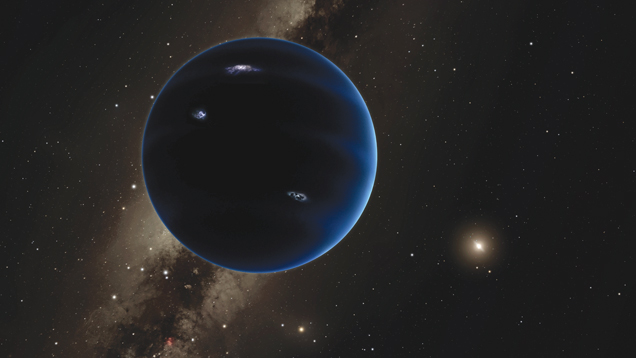Scientific Adventures: Pluto-killer strikes again, finds new planet
 CREDIT: CALTECH/R. HURT (IPAC)
CREDIT: CALTECH/R. HURT (IPAC)Scientists have found evidence of a possible ninth planet in our solar system. It is thought to be gaseous, similar to Uranus and Neptune. The scientists are expected to take five more years to gather a visual representation of the planet.
This week we look at dissolving medical sensors, the possible discovery of a new Neptune-sized planet at the fringes of our solar system and 2015 being the hottest year on record.
New silicon sensors biodegrade
Scientists from two Midwestern U.S. universities have developed a new type of biodegradable sensors for surgery patients after successfully testing a new type of temperature and pressure sensor for the brain.
The prototype is to be reabsorbed by the body when it’s no longer needed.
Current sensors available are ill suited to human bodies for a few reasons. Surgery is again required to remove it, they can migrate in the body and they are notorious for harbouring biofilm layers of disease- causing microorganisms.
The new sensors work just as effectively as those currently used, but come with the added bonus of needing no surgery to remove them after their job is finished, and no observed detrimental effect to the patient, with the sensors molecular remains being passed by the body after dissolving.
The new sensors are made from a type of layered silicon and allow for wireless communication between the chip and an NFC reader used by doctors and nurses.
The team now plans on making the sensors take on a more active role in the future, including electrical stimulation and medicine delivery directly to the area affected.
Evidence for a ninth planet
The astronomer whose research successfully demoted Pluto to dwarf planet status in 2006 is back at it with some mind-boggling data.
Mike Brown and fellow astronomer Konstantin Batygin spent months on individual computer simulations, knowing the possible backlash, before coming to the often- criticized theory that there must be another planet in our solar system.
This time it’s different, as the duo looked at six Kuiper’s Belt Objects (KBOs) that sit outside Neptune’s orbit.
The six have a different orbit from the rest of the solar system, skewed at almost a 20-degree angle from the orbital plane, traveling in drawn out elliptic orbits.
After months of dropping the six objects into countless simulations, what the two found was a bit weird; a planet, slightly smaller than Neptune, that takes about 15,000 years to orbit the Sun. Previous research using numerous telescopes had all failed to find anything, but with the new data, it may simply be that we didn’t know where to look.
The theoretical planet, currently dubbed Planet Nine, is thought to be 200 Astronimcal Units (AU) away from the sun at it’s closest and up to 1200 AU when farthest away, with a mass of about 10 Earths.
Due to its huge viewing range, the duo now plan to use the Japanese Subaru telescope in Hawaii to look for Planet Nine, expecting to take five years to have visual confirmation of the planet. Until then, the scientific community remains cautious but confident the pair will find what they’re looking for.
2015 hottest year on record
The US National Oceanic and Atmospheric Administration (NOAA) have recently released disturbing, but expected news. Last year was the hottest year ever recorded in history.
Besides the obvious issue of climate change, scientists also stated 2015 had an extremely large El Niño weather system, causing warmer waters in the Pacific, drastically increasing the world’s average temperature.
NOAA officials have been collecting worldwide temperature data since 1980, but other official sources go back as far as 130 years, and use 20th century temperatures as a model for average global temperature.
Last year, 10 out of 12 months were warmer than average, with the final eight consecutive months being warmer, while NOAA also stated that December was the warmest month, at 1.11 degrees Celsius higher than its average, and that this was the largest increase in temperature above average ever recorded.
In fact, the last three years have been the first, second and fourth hottest years on record, and it is just getting worse. The last 15 years are all in the top 16 hottest years on record, when compared to the average.
NOAA’s 2015 global analysis also showed that while parts of Quebec, Eastern Canada and Argentina had cooler than average temperatures, they were by no means the coldest recorded.
With the number of natural disasters made worse by climate change in recent history, including the Syrian and Californian droughts, increased melting of the Arctic ice shelf and the migration of the Zika virus from Africa and Asia to Oceania and South America, it’s no longer a question of if, but when; when are humans going to stop trying bite the hand that feeds them, because it’s starting to bite back.














